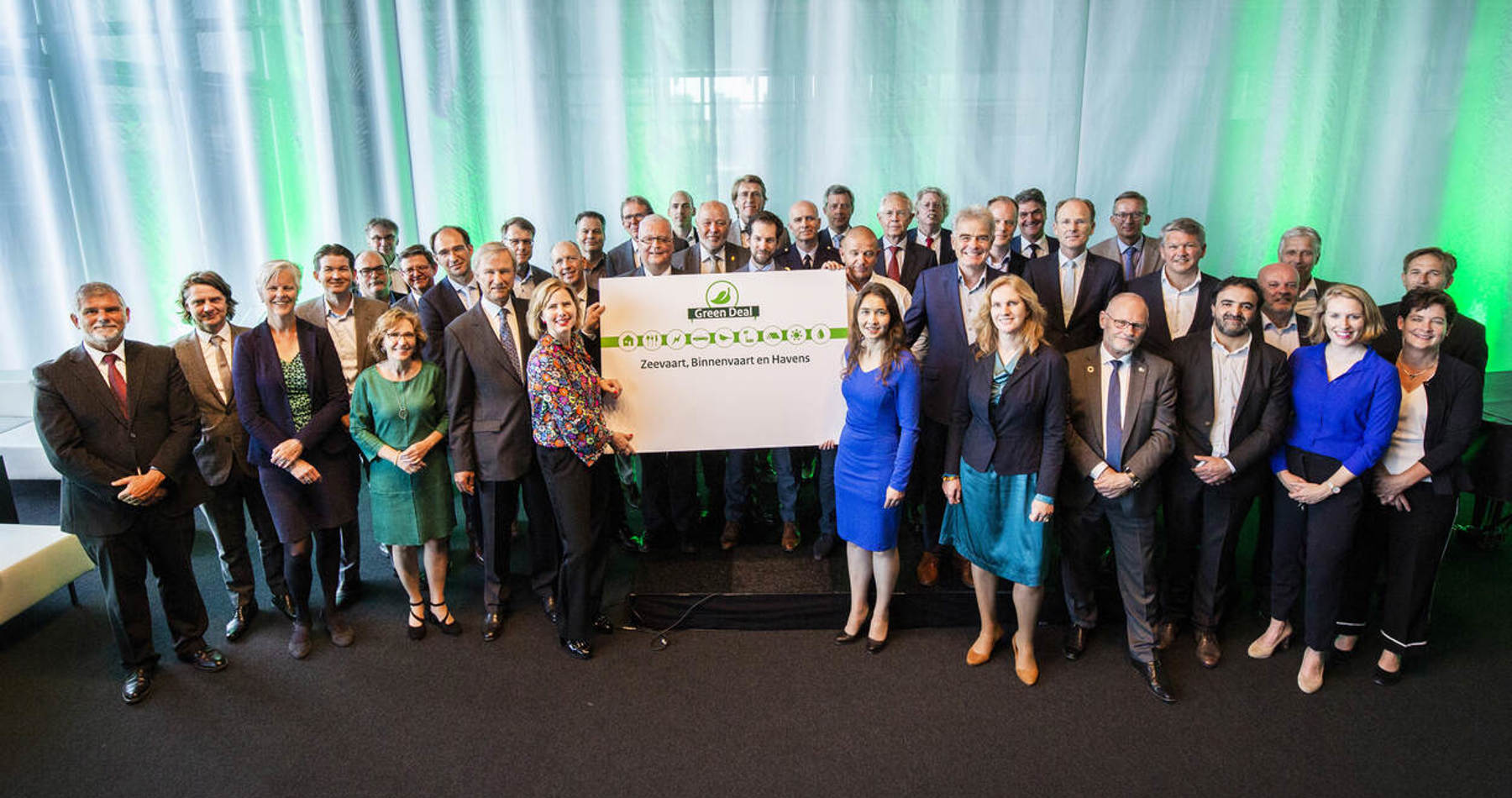
Green Deal next step to new system jump
“This Green Deal is the prelude to a new system. The propulsion of ships must be different. We owe it to our reputation“, said Van Nieuwenhuizen. “The significance of transport for prosperity in the Netherlands is enormous. We are a sailing nation that must lead the way in this change! That is why we join forces and together we put our best foot forward. Everything to maintain our position as a trading nation. Now I find 2050 always quite far away. But 2030 will be ten years from now! If we want to achieve something, then we must speed up. And that is exactly what I am going to do with this Green Deal.”
Ambitious
According to Van Nieuwenhuizen, the key objectives of the Green Deal are the arrival of inland navigation vessels with zero-emission propulsion in 2030, the government as launching customer, a green energy label for ships and at least one emission-free seagoing vessel. “Specific. With tangible products as the end result. Our ambition for inland shipping is at least 40% less CO2 emissions in 2030 and almost climate neutral in 2050. We have also succeeded in making national agreements in this Green Deal on making maritime shipping more sustainable. Despite the global playing field. Here too, a strong ambition with 70% fewer emissions in 2050. A lot more ambitious than we have agreed internationally within the IMO.”
Focus on the entire chain
The fact that the Green Deal is widely supported in the logistics chain results in a first serious step towards a better climate and cleaner environment. Ministries, provinces, ports, shippers’ organizations, large banks, knowledge institutions and maritime sector organizations, such as the Royal Association of Dutch Shipowners (KVNR) to which Wagenborg is a member, complied among other things with the agreement.
The focus on sustainability within the chain fits seamlessly with the vision of Wagenborg. This vision consists of three pillars:
Specifically, this vision leads to various actions, such as participation in the Green Maritime Methanol Project Consortium. In this partnership, Wagenborg investigates with other shipowners, suppliers and shipyards the use of methanol as a fuel in shipping.

Shore power
The agreement also states that the Dutch government will abolish the energy tax on the use of shore power by ships. By using shore power, ships do not emit any emissions during loading and unloading in the port. Wagenborg had already introduced a fixed shore power connection on its RORO vessels in 2000 in cooperation with its customers. In practice, ships with a shore power connection are completely dependent on the local infrastructure and available facilities in ports. The fact that Dutch ports are committed to the objectives of the Green Deal is a step forward in facilitating clean shipping.
Just in time sailing
In practice, a lot can be gained with good planning. Sometimes a quay is not available, stevedores are not ready to load or unload, or the product to be loaded is not yet fully ready: all factors that make it unnecessary for ships to wait in a port with all the associated emissions. We can still take major steps if shipowners are able to coordinate schedules together with the customer and port operators. Systems that monitor operations and can steer ships on time make waiting in a port unnecessary for loading or unloading. DNV’s international research has shown that with an optimal supply chain we can reduce CO2 emissions by 25%.
Wagenborg is regularly in discussions with its contract customers to see how we can optimally organize the logistics chain. Not from a customer-supplier relationship, but from the conviction that an optimal supply chain produces a win-win-win situation: for the shipping company, for the cargo owner and for the environment.
